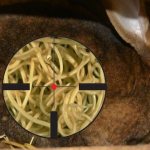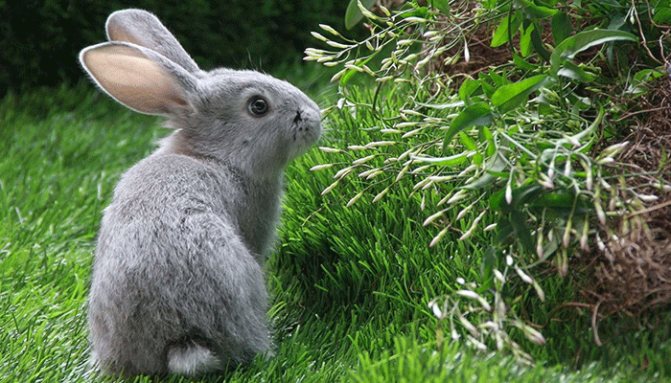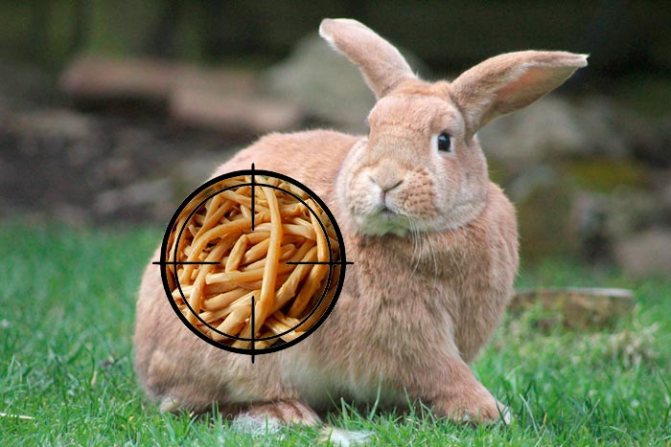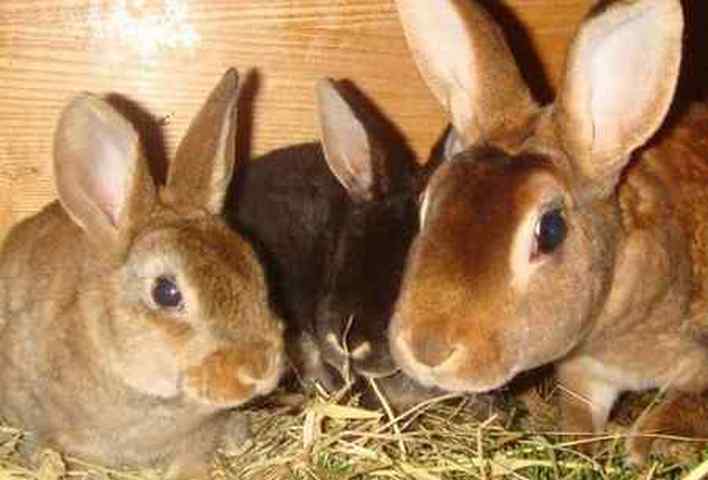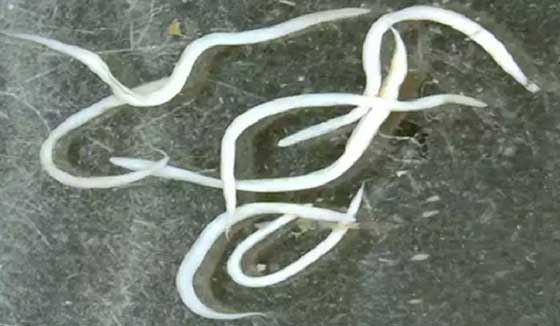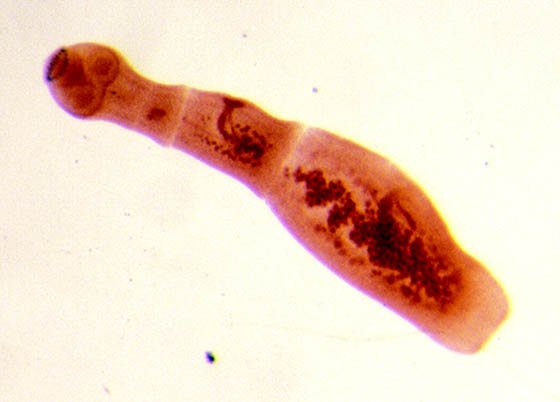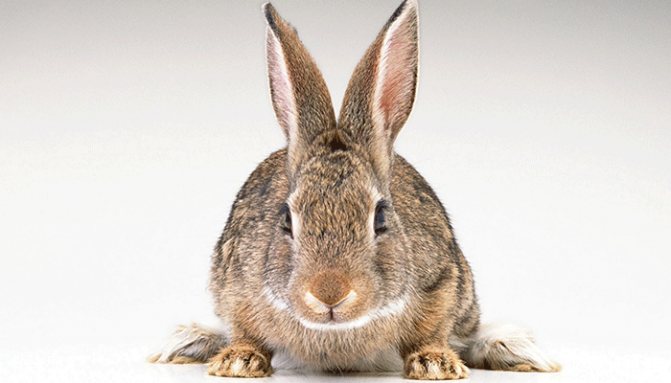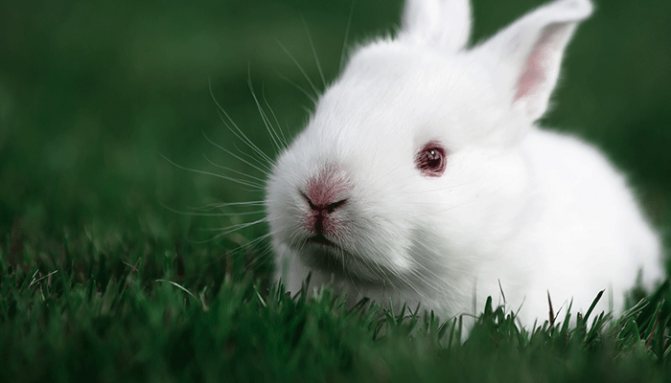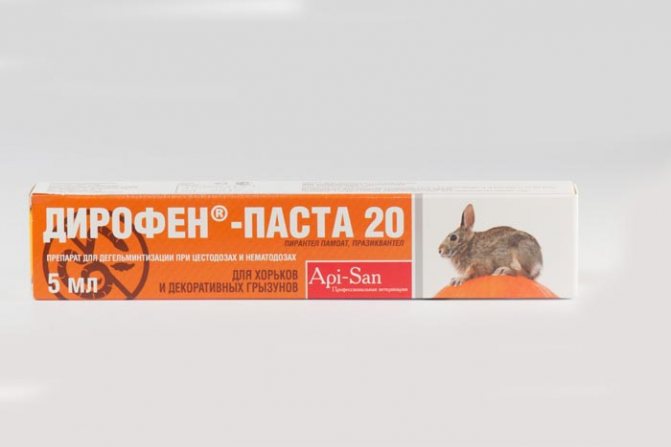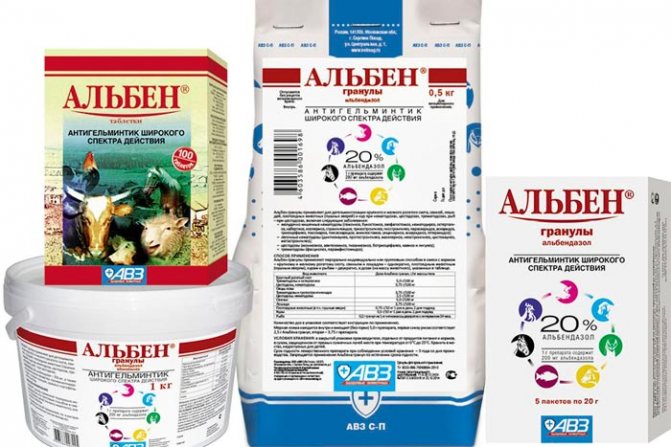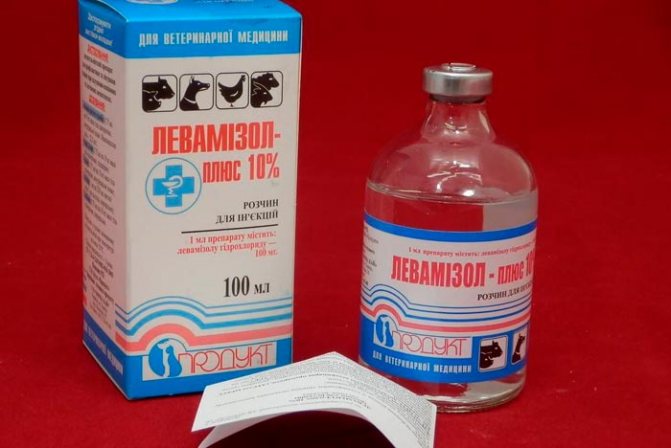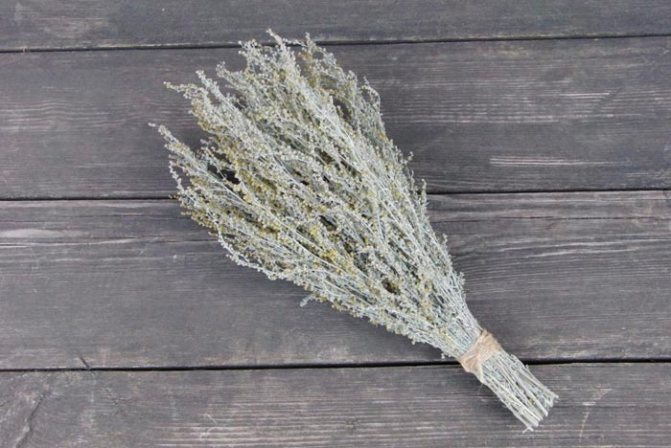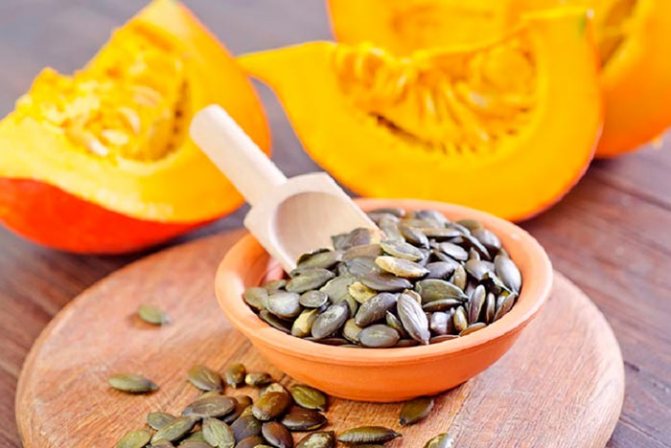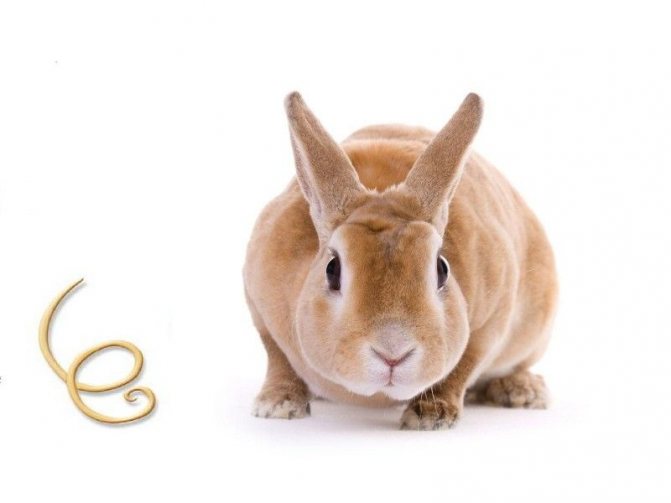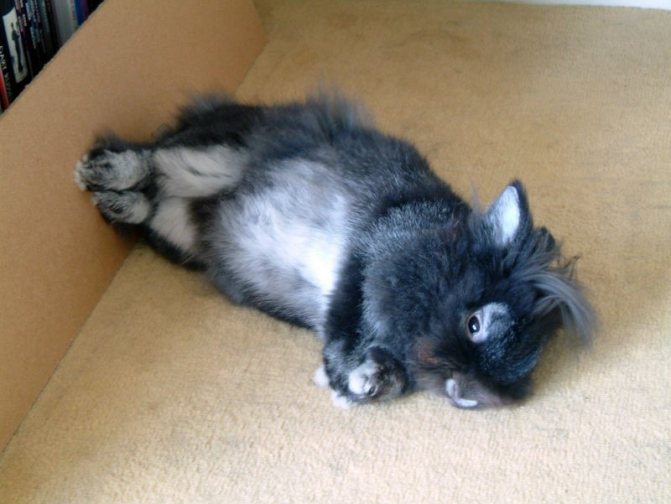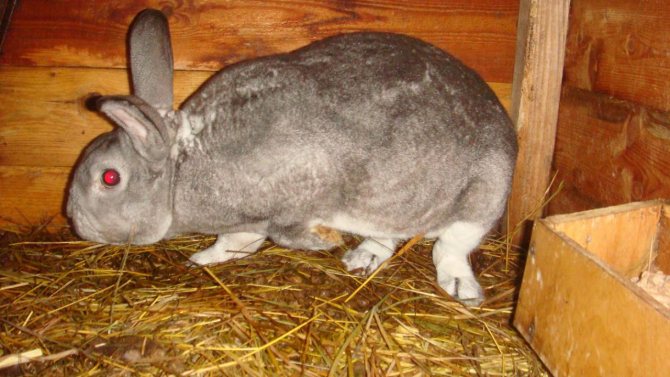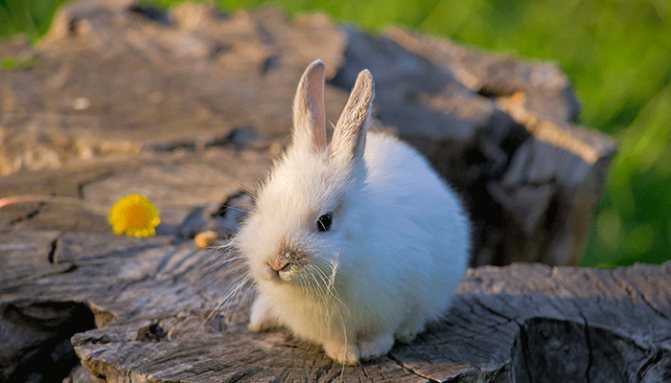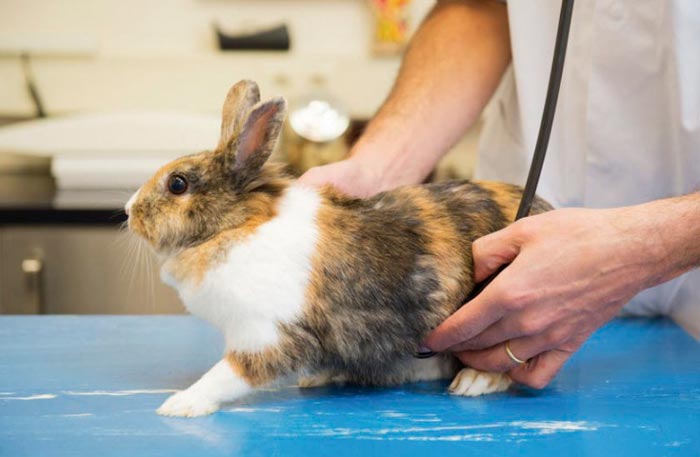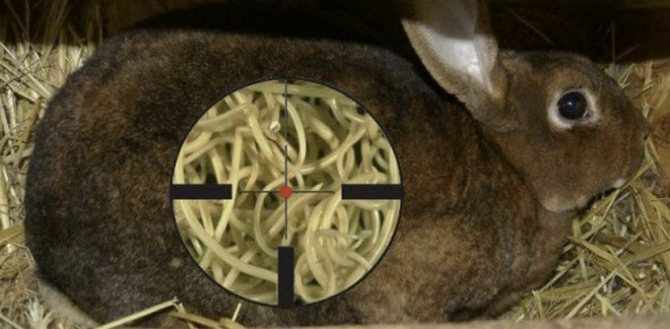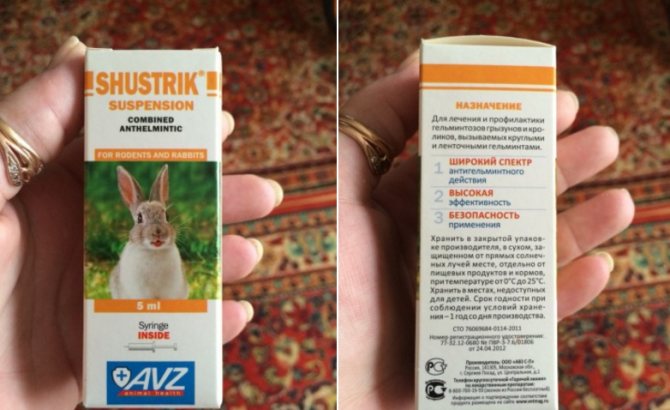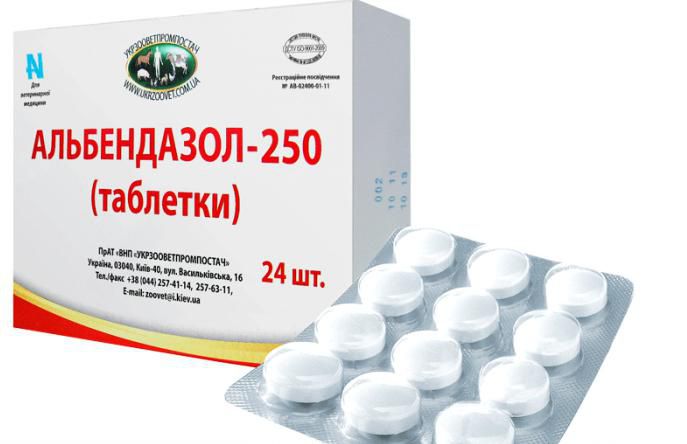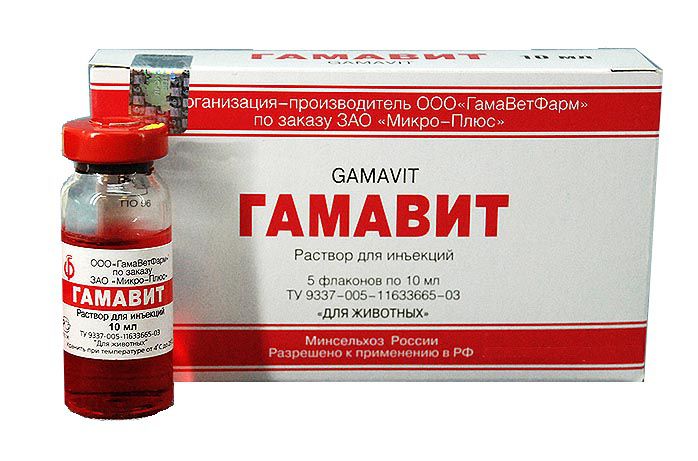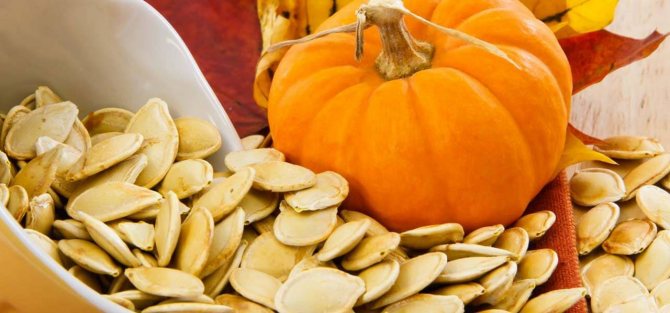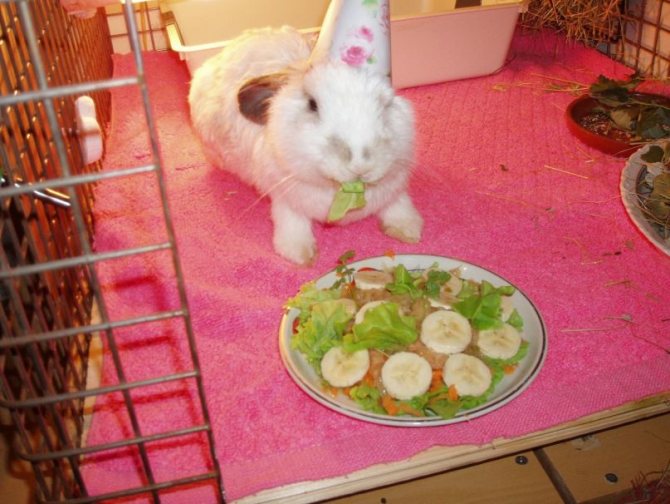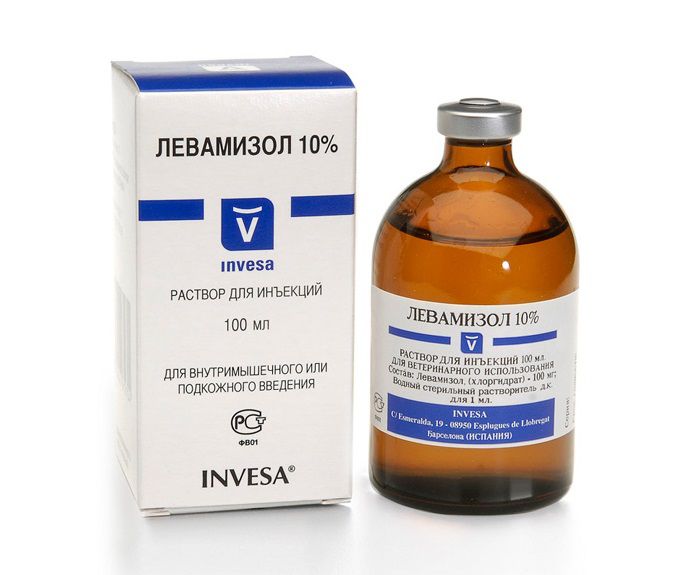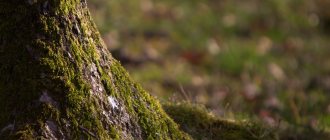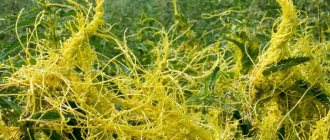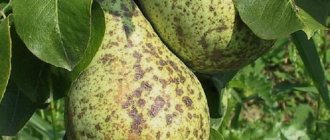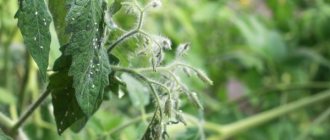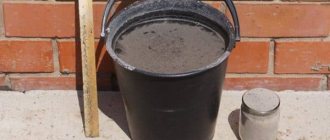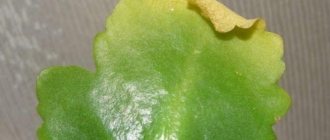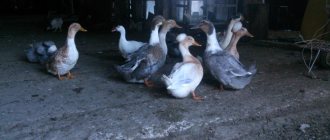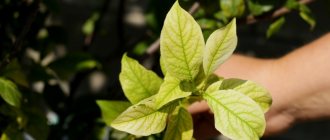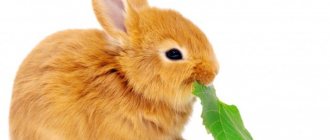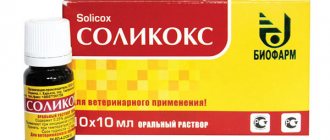In rabbits, helminthiasis can appear just as easily as other pets. If measures are not taken in time, the reproduction of parasites will lead to serious damage to internal organs, and subsequently to the death of animals. The greatest danger is that the worms may not show themselves for a long time, and the rabbits will look absolutely healthy.
Worms in rabbits: treatment
How to recognize this disease in the early stages and what are the most effective treatments?
Are there worms in rabbits: decorative and domestic
Domestic and decorative rabbits can become infected with helminths. This usually happens when the feed is eaten. Most often, those rabbits who are kept on the earthen floor are sick.
If the animal has strong immunity, a well-chosen diet, infections can be avoided - eggs or larvae will be destroyed by the acidic environment of the stomach and the immune system.
But in small rabbits, in which the acidic environment has not yet had time to form, parasites often appear.
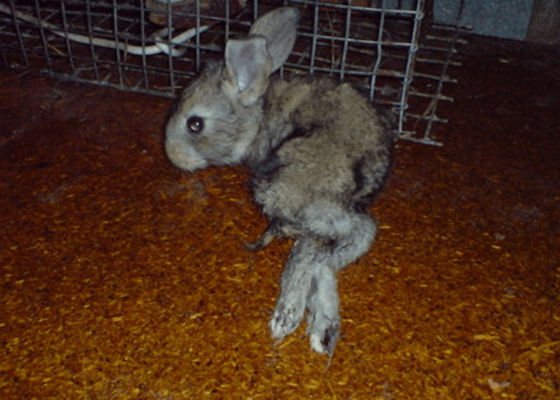
Worm-sick rabbit
They destroy the already weak immunity. If there are a lot of worms, they can get tangled, clog the intestines and lead to its rupture. In the course of their vital activity, worms often injure both the intestines and other organs.
The most common parasites:
| Type of helminth | Disease |
| Pinworms | Cause passalurosis. Infection occurs when eggs from feed enter the body. In humans, pinworms cause enterobiasis, and passalurosis is applicable only to rabbits and hares. Pinworms cause severe itching in the rabbit, and it rubs against the cage or floor.
|
| Echinococcus | For echinococcus, the rabbit is an intermediate host. Therefore, worms are not found in the body of the animal. Infection with eggs occurs through feed. From them, larvae develop, which move to the liver, and also spread to other organs, forming tumors there. Among themselves, rabbits do not become infected with echinococcosis.
|
Why helminths are dangerous
Worms pose a serious threat to the health of livestock:
- There is no organ or tissue that does not infect worms. It all starts, as a rule, with the digestive system: damage to the mucous membranes, disruption of the gastrointestinal tract, inflammation. Over time, worms accumulate and spread further, settling in other systems. Launched helminthiases end in serious consequences, up to organ failure and death.
- Worms eat lymph, blood, nutrients that were intended for the body. As a result, the rabbit weakens, and the parasites grow in size and reproduce.
- In the process of vital activity, worms release harmful substances - toxinsthat negatively affect the state of the infected individual.
- The immunity of animals is weakening. Animals pick up other diseases. This is especially dangerous for pregnant females, rabbits, initially sick or weakened animals.
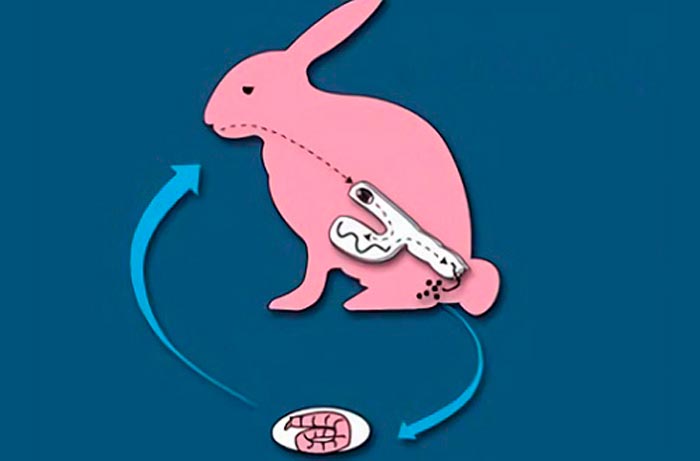

Symptoms and how to identify parasites
You can suspect helminthiasis by changing the behavior of the animal. The symptoms of infection are as follows:
- increased appetite or lack thereof;
- weight loss;
- increased thirst;
- active molt.


Active molt
Symptoms are most pronounced in young animals. The rabbit can refuse to eat, look lethargic, sit with a detached look, not resist if he is taken in his arms.
To reliably determine the type of parasite, a blood test is performed. Feces can also be taken for analysis, but this method is not reliable enough due to the fact that it is possible not to catch the moment of reproduction of the parasite with the removal of eggs. It is all the more problematic to see the parasites or their eggs on your own.
Can I eat the meat of an infected animal?
Rabbits with helminthiasis are not suitable for slaughtering for meat. They are reduced in weight, meat loses its taste and nutritional value. The product needs a long cooking time, so the finished dish loses any taste. In addition, it can be psychologically unpleasant to consume a product from such an animal.
It is forbidden to give raw meat of a sick animal to cats or dogs!
Worms in rabbits are a serious problem. It directly affects business results. Fighting helminths is usually easy. In most cases, it all comes down to a few rules and procedures. The main thing is to do them regularly.
Treatment: pills and other drugs


Drits Irina Alexandrovna. Parasitologist Helminthiasis can lead to numerous health problems, shortening life by 15-25 years. Many parasites are extremely difficult to detect. They can be anywhere - in the blood, intestines, lungs, heart, brain. Symptoms of helminthic invasion can be confused with ARVI, gastrointestinal diseases and others. The main mistake in such cases is procrastination! If you have any suspicions about the presence of parasites, then you need to see a specialist. More information about modern methods of treating helminthiasis is described in this interview with a doctor... If we talk about drugs and self-treatment, then from the most common helminths (ascaris, pinworms, tapeworms), this antiparasitic complex.
Any drug can be used only after consulting a veterinarian. You should carefully read the instructions and correctly calculate the dosage so as not to poison the animals.
The most commonly used:
- Shustrik;
- Albendazole;
- Gamavite;
- Pirantel;
- Tetramisole;
- Dronten.
Treatment of passalurosis (pinworms)
Do not feed rabbits for 24 hours. Then add piperazine sulfate to the feed. The dosage is 1.5 g of the drug per 1 kg of body weight.
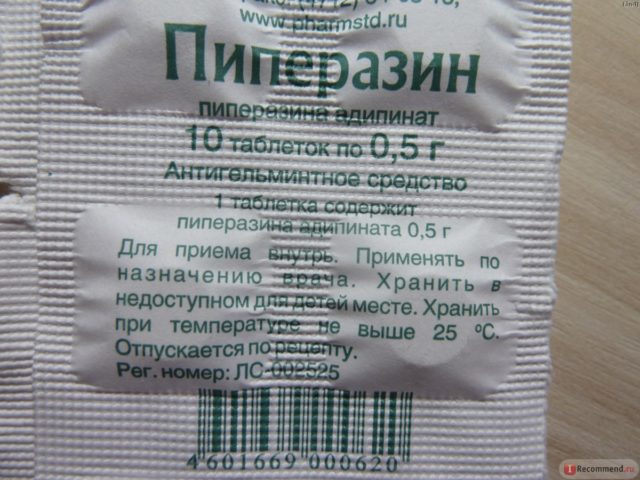

Longer and more gentle treatment can be carried out. Within 12 days, phenothiesine should be mixed into the feed at a dosage of 0.1 g per 1 kg of body weight. For rabbits, you can use Shustrik suspension or albendazole.
During treatment, animal feces must be burned. After using drugs, you need to restore the intestinal microflora. To do this, rabbits can be given probiotics.
Echinococcosis treatment
Treatment should be comprehensive. The disease is treated with mebendazole at a dosage of 5 mg per 1 kg of body weight, the course lasts 5 days. You can use fenbendazole once at a dosage of 10 mg per 1 kg of body weight or thiabendazole for 3 days at a dosage of 75 mg per 1 kg of body weight. Suspension Shustrik is also effective, kills eggs and larvae.
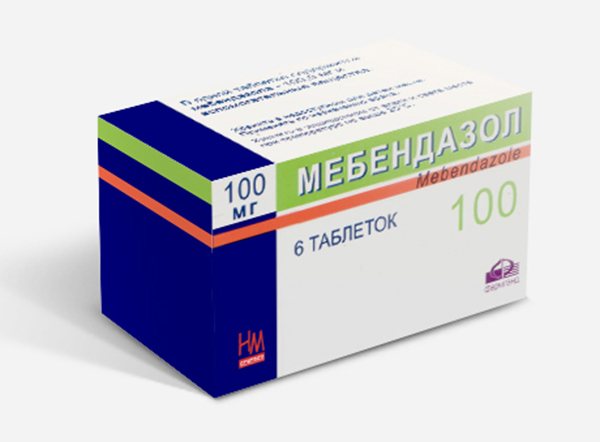

Diagnostics
Having found alarming symptoms, you need to contact your veterinarian to confirm the diagnosis. Various methods are used for diagnosis. The simplest is the study of feces for helminth eggs. To get an accurate result, you will have to donate feces to the laboratory several times at intervals of 1-3 days. This need arises due to the fact that helminth eggs are not always excreted with feces.
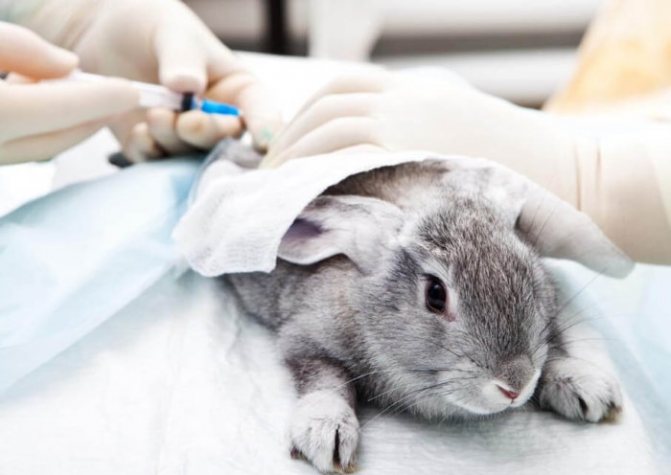

Blood sampling for analysis
There is another way to diagnose - by blood. When the body is dominated by helminths or protozoan parasites, antibodies are produced, by their titers it is easy to detect the presence of one or another type of worm. However, this method has the disadvantage that it is expensive.
Reference. Some types of helminths can be found independently in the feces of rabbits, for example, pinworms.They multiply in the rectum and are often excreted during bowel movements.
Home remedies for rabbits
The use of home remedies is justified by the fact that subsequently there will be no chemicals left in the meat that enter the human body.
| Raw materials | Mode of application |
| Sagebrush | The herb is active against pinworms and roundworms. It is fed to rabbits with the main diet in the amount of 30% of the total feed mass. Young rabbits are given less. |
| Tansy | In a folk way, tansy is called a worm. It is given in the same way as wormwood - it is mixed with the main feed. Separately, you can feed 2-3 branches. |
| Needles | Needles can be harvested only in severe frost, about 20 degrees, in order to avoid animal poisoning. The raw materials are mixed into the feed. |
| Pumpkin | Seeds are fed to rabbits daily in small quantities. |
Is infection possible?
Unfortunately, the presence of helminths in the body in seemingly herbivorous animals is a fairly common phenomenon. After all, they are prone to eating food, which is a source of infection:
- This, for example, can be various roots, which caring owners regularly feed their pets. Often, particles of soil remain on these vegetables, which can contain a large number of helminth eggs.
- Another common cause of infection in rabbits is eating grasscontaminated with faeces from previously infected animals (most often dogs). In this case, the likelihood of penetration of helminth eggs into the body is also high.
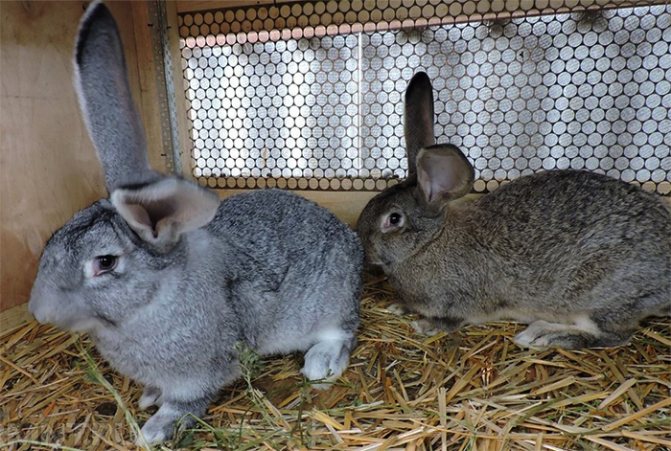

Prevention of helminthiasis
Only rabbits over 3 weeks old and adult rabbits can be given medications for prophylaxis. It is important to deworm before pregnancy because the parasites are transmitted to the fetus. The interval between worming and vaccination should be at least 2 weeks.
Feed must be harvested from trusted sources; you must not mow the grass in swampy areas and in meadows where hares are found. Dogs should not be kept near rabbits. They need to be put on a chain and regularly prevented helminthiasis with drugs.
Infected rabbits must be handled with care because some types of helminths are dangerous to humans.
Helminthiases cause losses to farms, and also undermine the health of decorative rabbits. They are dangerous especially for young animals with weak and undeveloped immunity.
Treatment is carried out with various drugs, selected depending on the causative agent of the disease. You can determine the type of helminthiasis by analysis. To prevent infection, preventive measures must be followed: carefully monitor the conditions of detention, disinfect, isolate rabbits from other animals, and carry out preventive courses of treatment.
Preventive measures
Worm remedies are not necessarily only given to infected rabbits. This is done in a planned manner, for prevention:
- 14 days after the acquisition of the animals. Repeat after 10 days.
- Rabbits at the age of at least 1.5 months are given antihelminthic drugs (Ivermek, Mebendazole, Levomizole and others). Obligatory patient weight - from 300 g.
- After primary deworming, the course is carried out every 3 months. For decorative pets - every six months.
There are other preventive measures:
- Regular cleaning, disinfection. Applies not only to rabbits, but also to other other animals, from which pussies can become infected.
- Check food. They do not take feed that has been lying for a long time and damp, as they can be contaminated.
- The grass is harvested away from the habitats of animals.
- Derive worms at the same time in rabbits and other domestic animals. The owners are also taking appropriate medications.
- They do not allow crowding, install ventilation, create suitable conditions. This strengthens the immune system, reduces the risk of infection.
- They try to keep rabbits and other animals out of contact. For example, they do not allow the master's dog to climb on the feeders.
Folk ways
Eating herbs such as tansy or wormwood is an effective and completely free treatment. And in winter, needles can perfectly replace them. Eating her rabbits will also be happy. Prevention also includes consuming these plants from time to time.
Sagebrush
It is an excellent anthelmintic that even Alben can match. The treatment is very effective for them. And moreover, in cases when a rabbit eats bitter wormwood along with plant food, his appetite noticeably improves. The herb is equally good at helping animals and people from worms. In order for this tool to give a quick result, wormwood is added to the fragrant hay, which makes up at least 30% of the daily plant food for animals.
Tansy
Tansy is not only very useful as a medicine, but can also become a decoration of the site in the summer, because in itself it is a beautiful plant. In order to get rid of worms, tansy is given to rabbits in the same daily amount as wormwood.
Needles
The needles of spruce trees are indispensable in the fight against helminths, when it was not possible to make preparations for the winter from tansy and wormwood. The only condition: the collection of needles must be carried out at a temperature of -20C and below. This is explained by the fact that too many essential oils are concentrated in the needles collected in warm weather. Their excess can harm the health of the eared.
You can combine herbs and needles, giving them to fluffs for several days in a row. It is imperative to ensure that animals always have clean and fresh water.
Echinococcosis. In everyday life - rabbit Cysticercosis.
Echinococcosis or cysticercosis in rabbits does not quite fit into the generally accepted idea of worms. After the slaughter of the animal, you will not find any worms in the body, as in the previous case. The thing is that the eared ears are only an intermediate link in the general scheme of the development of this parasite.
To make everything immediately clear, let's describe the entire life cycle of echinococcus. To complete it, you need two animals. In our farms it is a rabbit and a dog or a cat. And in the wild, a hare can play the role of a rabbit, a wolf, a jackal, a fox can play the role of a dog or cat.
THERE ARE other types of parasitic tapeworms, in which other species of animals and even humans are involved. For example, pork tapeworm (tapeworm) part of life is in the body of a pig in the phase of encapsulated Finns, and part of it is in the human body in the form of tapeworm - tapeworm. The disease caused by such a parasite is called cysticercosis.
So, the carriers of adult tapeworms are mainly dogs. Parasites, I must say, are not very large, only 2.5-8 mm long. The scolex or head located in the head section of the parasite has 4 suckers and a double crown of 35-40 hooks with which it clings to the intestinal wall. Such a parasite, in order to continue its kind, produces hundreds and hundreds of eggs, which come out with torn off segments, along with the feces of dogs.
These segments can move independently and distribute eggs over a large area, infecting the territory. In the wild, for example, meadow grass can be infected, in households the territory becomes infected and from it eggs are carried by the wind, birds, rodents and get on feed, in drinking water.

